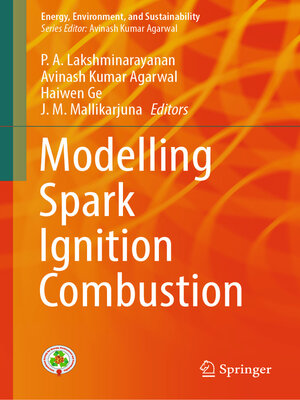Modelling Spark Ignition Combustion
ebook ∣ Energy, Environment, and Sustainability
By P. A. Lakshminarayanan

Sign up to save your library
With an OverDrive account, you can save your favorite libraries for at-a-glance information about availability. Find out more about OverDrive accounts.
Find this title in Libby, the library reading app by OverDrive.



Search for a digital library with this title
Title found at these libraries:
| Loading... |
The book provides a comprehensive overview of combustion models used in different types of spark ignition engines. In the first generation of spark ignition (SI) engines, the turbulence is created by the shear flow passing through the intake valves, and significantly decays during the intake and compression strokes. The residual turbulence enhances the laminar flame velocity, which is characteristic of the fuel and increases the relative effectiveness of the engine. In this simple two-zone model, the turbulence is estimated empirically; the spherical flame propagation model considers ignition delay, thermodynamics, heat transfer and chemical equilibrium, to obtain the performance and emissions of an SI engine. The model is used extensively by designers and research engineers to handle the fuel-air mixture prepared in the inlet and different geometries of open combustion chambers. The empiricism of the combustion model was progressively dismantled over the years. New 3D models for ignition considering the flow near a spark plug and flame propagation in the bulk gases were developed by incorporating solutions to Reynolds-averaged Navier-Stokes (RANS) equations for the turbulent flow with chemical reactions in the intense computational fluid dynamics. The models became far less empirical and enabled treating new generation direct-injection spark-ignition (DISI) gasoline and gas engines. The more complex layout of DISI engines with passive or active prechamber is successfully handled by them. This book presents details of models of SI engine combustion progressively increasing in complexity, making them accessible to designers, researchers, and even mechanical engineers who are curious to explore the field. This book is a valuable resource for anyone interested in spark ignition combustion.






